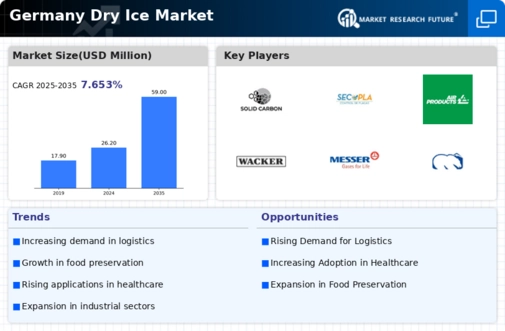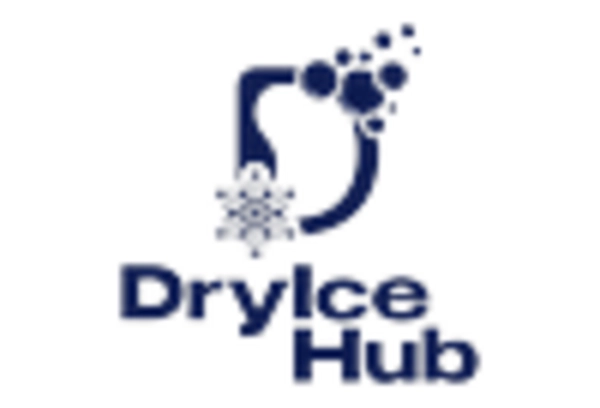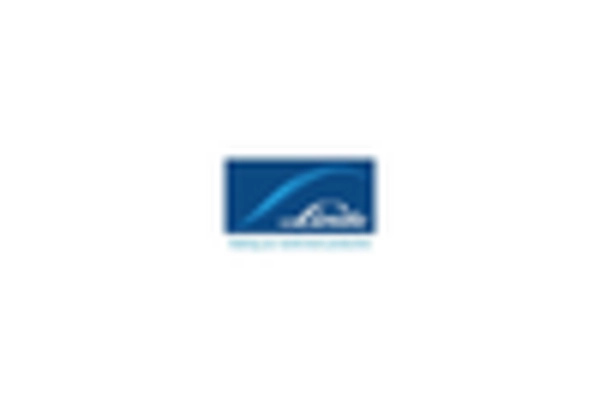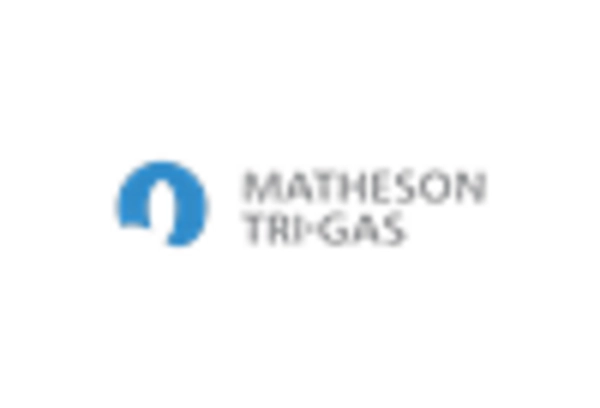Surge in E-commerce Deliveries
The rise of e-commerce in Germany has led to a significant increase in demand for dry ice, particularly for the delivery of perishable items. As online grocery shopping becomes more prevalent, the dry ice market is poised to benefit from the need for effective cooling solutions. In 2025, it is estimated that e-commerce will contribute to a 25% increase in dry ice consumption, as retailers seek to ensure product quality and safety during delivery. This trend highlights the importance of dry ice in maintaining the cold chain, thereby enhancing customer satisfaction and reducing spoilage rates.
Increasing Adoption in Logistics
The logistics sector in Germany is experiencing a notable shift towards the use of dry ice for temperature-sensitive shipments. This trend is driven by the need for efficient cold chain management, particularly in the transportation of perishable goods. The dry ice market benefits from this increasing adoption, as it provides a reliable solution for maintaining low temperatures during transit. In 2025, the logistics sector is projected to account for approximately 30% of the total demand for dry ice in Germany. This growth is indicative of the broader trend towards enhanced supply chain efficiency, where companies are increasingly prioritizing the integrity of their products during transportation.
Expansion of the Food Processing Industry
The food processing industry in Germany is undergoing significant expansion, which is positively impacting the dry ice market. As food manufacturers increasingly adopt advanced preservation techniques, the demand for dry ice is expected to rise. In 2025, the food processing sector is projected to account for nearly 40% of the total dry ice consumption in Germany. This growth is driven by the need for effective freezing and storage solutions that ensure product quality and safety. The integration of dry ice in food processing not only enhances shelf life but also supports the industry's efforts to meet consumer demands for fresh and high-quality products.
Regulatory Support for Sustainable Practices
Germany's commitment to sustainability is influencing the dry ice market, as regulations increasingly favor environmentally friendly practices. The use of dry ice, which is a solid form of carbon dioxide, aligns with these sustainability goals, as it is non-toxic and can be produced with minimal environmental impact. In 2025, it is anticipated that regulatory frameworks will further promote the adoption of dry ice in various sectors, including food and pharmaceuticals. This regulatory support could lead to a projected growth of 15% in the dry ice market, as companies seek to comply with environmental standards while maintaining operational efficiency.
Technological Innovations in Dry Ice Production
Technological advancements in the production of dry ice are playing a crucial role in shaping the dry ice market in Germany. Innovations aimed at improving production efficiency and reducing costs are likely to enhance the availability of dry ice. In 2025, it is expected that new production technologies will lead to a 20% increase in output capacity, thereby meeting the growing demand across various sectors. These advancements not only facilitate a more sustainable production process but also ensure that the dry ice market can respond effectively to the needs of industries such as food, pharmaceuticals, and logistics.

















Leave a Comment